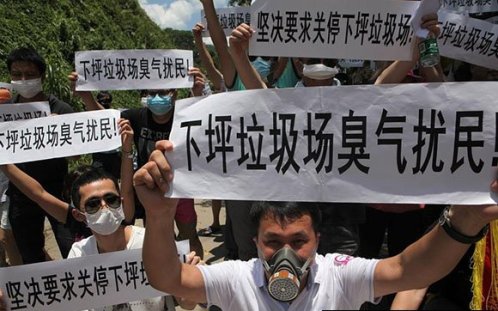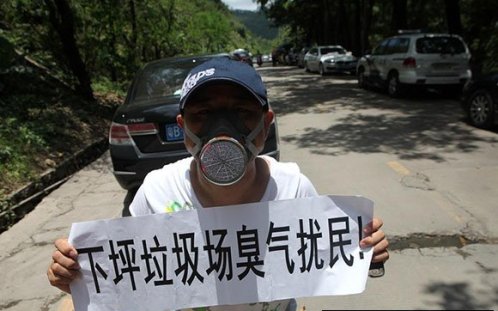Did the Times Censor a Story on Foreign Abortions in China?
Posted: 11/27/2014 11:23 amChina Curmudgeon received this story in our inbox recently from an anonymous source who claims it was spiked by the Times to ensure its reporters continue to have their journalist visas renewed. There is obviously no way for us to verify whether it is real or not – or maybe satire? – so leave it up to you…
Editor’s Note: It seems fake hospital names, terminated pregnancies in the 8th month, and an author known for his satire weren’t enough clues. So to be clear to all readers: this is satirical. It was written by the lovely and talented China Curmudgeon. We sincerely apologize to those who feel misled, and can assure you we have access to a telephone should we ever need to verify something…
For pregnant expatriate women living in Beijing, the feeling is becoming increasingly common. So are the stares, the accusing looks, the friends who stop calling.
For Clarissa Wellington, it came as a surprise. After learning she was expecting last June, she announced her pregnancy to overjoyed friends at brunch in the Chinese capital, where she and her husband have lived for nearly three years.
“Everyone was congratulating us like you’d expect your friends to,” she said. “Then someone asked when we were leaving China. They all assumed we’d leave because I was pregnant.”
Mrs. Wellington recalls the mood at the gathering shifted abruptly when her husband said they planned to stay in Beijing for three to four more years.
“The whole table went silent,” Mrs. Wellington said. “They were shocked. No, it was like they were horrified.”
Air pollution levels in Beijing often fluctuate between harmful and hazardous according to a World Health Organization index, and lung cancer is the city’s top cause of death. Food products are generally considered unsafe.
While many foreign employees of multinationals find working in the Chinese capital has short-term career benefits thanks to high salaries and increasingly common “environmental hardship” allowances, their children can end up paying the long-term cost. Babies are especially at risk. As an infant’s body develops, exposure to toxic pollutants through air, food and water can lead to a wide range of lifelong health problems.
Mrs. Wellington says her plan to raise a child in Beijing for several years made her an outcast in her circle of expatriate friends. Social invitations dried up, and several rounds of Facebook un-friending left her feeling alone.
The only people who attended her baby shower were Chinese colleagues of her husband.
“The whole experience made us stop and reconsider if we really wanted to raise a child in this kind of pollution,” Mrs. Wellington said. “We did some research about what the air in Beijing does to babies, and we decided to wait. That’s why we chose to abort.”
With the pregnancy now terminated, Mrs. Wellington is still in Beijing, waiting out the last months of her husband’s contract at an international law firm. In January the couple plans to return to San Francisco, where they hope to re-conceive in what they consider a more
appropriate environment for children.
“We did it for Micah,” she said, placing a hand on her stomach. “That’s what we were going to name him. But the air in Beijing is so bad that neither of us wanted Micah to even take one breath here.”
A NOT-SO-HARD DECISION
In many expat communities in Beijing, abortion is well on its way to becoming the preferred, socially acceptable alternative to the prospect of raising a young child in the world’s most polluted capital city.
“I love kids, and that’s why we ended it,” said Mandy Thompson, a training consultant from Wisconsin who had an abortion in October, just over eight months into her pregnancy.
“Sometimes I think about if we’d decided to have the baby and then went home after a year or two,” she said. “And then I know we definitely made the right decision. The first two years of a baby’s life are the most important for development. And Beijing is no place for human beings, especially the smallest and most vulnerable ones.”
Her husband agrees. When his wife first suggested ending the pregnancy, Randy Thompson was shocked. But with friends and family all trying to convince the couple to choose abortion, he gradually warmed to the idea.
“One day we were stuck in gridlock on third ring, discussing whether to abort or not,” Mr. Thompson said, referring to one of Beijing’s notoriously backed-up freeways that encircle the city. “I remember looking out the window and I couldn’t see the sun. There was light,
but no sunlight. Right then I decided I didn’t want to bring a child into a place like this. We can have a baby later, one that will grow up healthy.”
At Beijing Pacific Family Hospital, a foreign-run clinic with several Western doctors fronting a larger part-time Chinese staff drawn from local hospitals, consultations for abortions have skyrocketed over the last year. Roughly half the expatriate couples who come for prenatal
exams also request information about ending the pregnancy.
“It’s not that they don’t want children,” said Dr. Mark Moore, an obstetrician at Beijing Pacific. “They just don’t want to compromise the child’s health. So now we’re seeing a lot of couples saying ‘let’s do the right thing.’ That means aborting now and having children later, when they’re far away from Beijing.”
LIFE IN AN UNINHABITABLE CITY
Earlier this year the Shanghai Academy of Social Sciences published a study calling Beijing nearly “uninhabitable” due to extreme environmental pollution. Another recent study by Chinese and foreign researchers found the long-term effects of China’s pollution
shortens human lives in the country’s north by an average of 5.5 years.
But for many Chinese citizens, national pride translates into strong support for pollution.
“China is a powerful country, and we are surpassing the West in many ways,” said taxi driver Wen Jiqing in a thick Beijing accent peppered with profanity, pausing to hack and spit. As is common in the capital, he calls heavy pollution “poor weather.”
Liu Zheng, a twenty-three year-old intern at an online retailer, moved to Beijing last year after graduating college in her hometown of Xingtai, where the major industry is coal mining. She said she could immediately feel the effects of Beijing’s air on her body. Even now, her throat still burns, and her eyes are consistently red and irritated.
“We should support the government,” Ms. Liu said on a busy street corner when asked her opinion on the city’s air quality, her voice muffled by a thin cotton face-mask. “Pollution is a natural part of development. Anyone who criticizes our pollution is against China.”
When asked if she would ever raise children in Beijing, Ms. Liu replied, “I just found out I’m sterile, and I have absolutely no idea why.”
With most parents in Beijing fighting a losing battle to keep their children healthy, many expecting couples are finding that choosing between childbirth and terminating the pregnancy can be a source of marital tension.
Allison Webber, a management consultant from Canada, is seven months pregnant and says she’s leaning towards abortion.
“I’m starting accept that forcing your kids to live here is a form of child abuse,” she said. “It might be good for my career, but the fact is, it has an effect on a child’s health. I don’t want to be responsible for giving my children asthma.”
Her husband wants to keep the baby, and points to pollution domes that cover sports fields at some of Beijing’s international schools as proof the city’s massive pollution is not prohibitive to raising a child.
“But he smokes, so what does he know,” Mrs. Webber said, sipping imported bottled water at a cafe recently.
“Actually, I know quite a bit,” her husband said from the seat next to her. “Can we not have this conversation here?”
Mrs. Webber shook her head in disgust and looked at the smog outside.
“I just can’t raise a child in this pollution,” she said quietly. “I hate this fucking city.”
Home Page Photo Credit: SCMP









































